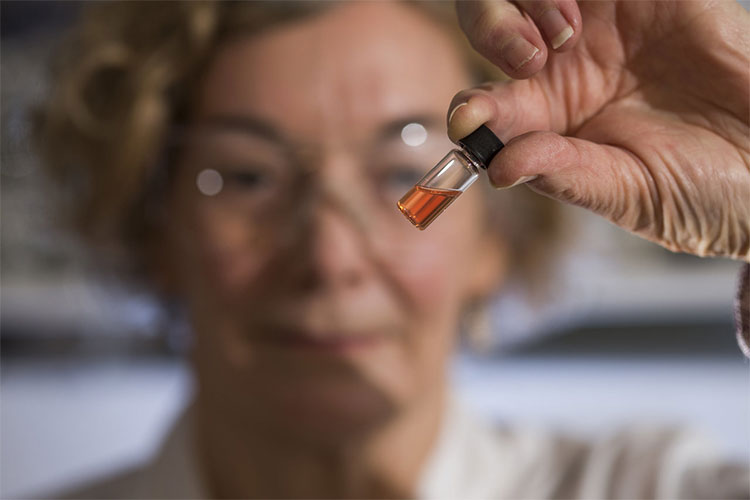Biological pigment detection is over 1.1 billion years old
Australian researchers have recently found the world's oldest biological color in a study that they believe helps explain the mystery of the existence of life forms on Earth.
According to a study published on July 10 in the Journal of Proceedings, a group of Australian scientists accidentally discovered pink pigments on analytical samples that were exploited by an oil company. found in Taoudeni basin, West Africa.

Australian researchers have recently found the world's oldest biological color in a study.(Photo: AFP).
Through analysis, the scientists identified the pink pigment produced from single microorganisms known to be more than 1.1 billion years old, about 500 million years older than Biological pigments were found before.
Pink pigments are the fossil remains of chlorophyll - a substance that allows plants and forms of life to observe microscopes, converting light into energy. The researchers confirmed that the pink pigments they found could be seen as blue in the human eye.
According to researcher Jochen Brocks of the Australian National University, these specimens are 15 times "older" than tyrants.
Scientists believe that the discovery partly explains the mystery of why life forms on Earth appeared only 600 million years ago, while Earth's age is 4.5 billion years.
Explaining this mystery, previous studies have suggested that low levels of oxygen in the air have inhibited the development of life forms, but finding cyanobacteria that are 1.1 billion years old suggests that reproduction of animals is related to the abundance of food sources, such as algae.
Researcher Brocks said that although algae are a type of microorganism, they are many times larger than cyanobacteria and are a more nutritious food source.
He thought that oceans containing cyanobacteria completely disappeared about 650 million years ago, when algae began to multiply and became an essential energy source for the growth of complex ecosystems in animals. Large, including humans, can exist and grow on Earth.
- Body biological clock of 2.5 billion years old
- Eyes brighten thanks to a biochip implant
- What to do to adjust the biological clock
- Tobacco plants have the ability to leak mines
- Detection of bacterial fossils dating back to 1.2 billion years
- why are the forgs is green?
- Why do people have two different eye colors?
- The universe may be 'younger' than 2 billion years old
- Life on Earth may have started over 4 billion years ago
- Detected 3 billion years old water
- Detection of 2.5-billion-year-old fossil microbes live without oxygen
- Observe complex pigment mixtures in living cells
 'Fine laughs' - Scary and painful torture in ancient times
'Fine laughs' - Scary and painful torture in ancient times The sequence of numbers 142857 of the Egyptian pyramids is known as the strangest number in the world - Why?
The sequence of numbers 142857 of the Egyptian pyramids is known as the strangest number in the world - Why? History of the iron
History of the iron What is alum?
What is alum?